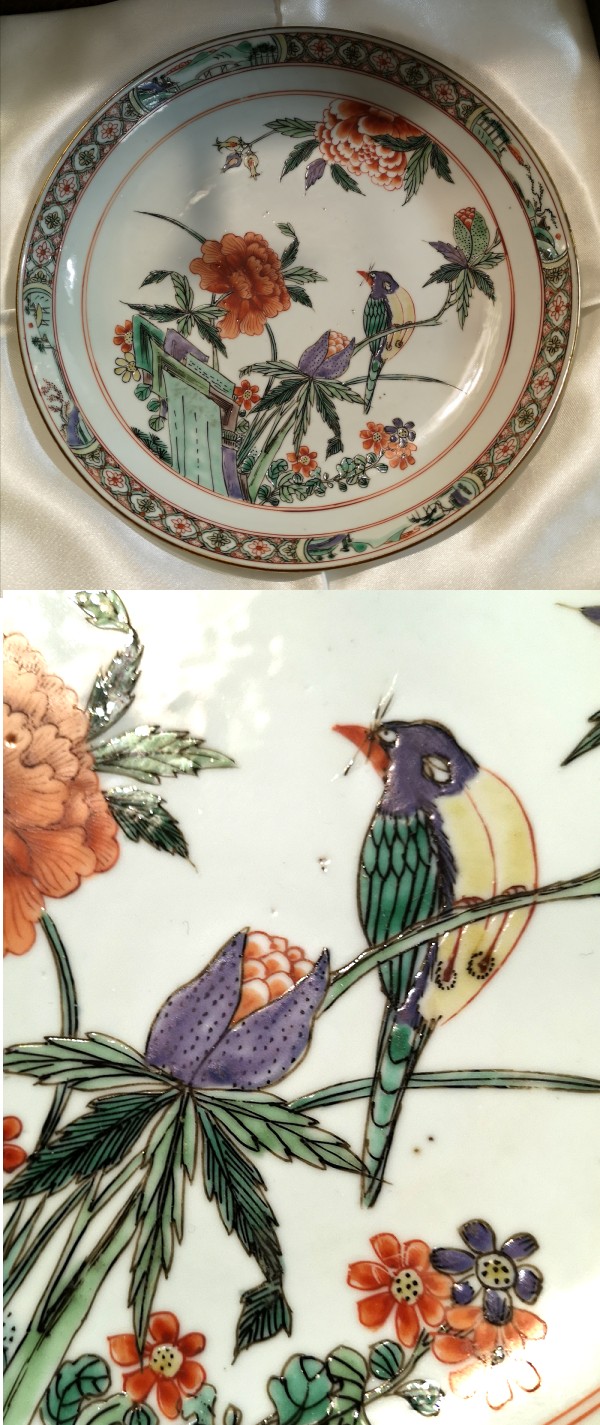
Dish, decorated in famille verte. Kangxi period 1662-1722.
Mikael Karlsson Coll, 2022
Meaning "the green family". Overglaze enamel decoration on export and Imperial porcelain. Developed during the Ming dynasty from multicolored decorations with tranclucent enamels, applied during secondary firing/s on glazed porcelin. By the end of the 16th century formalized into Wanli wucai - Wanli five color enamels - then further into Kangxi wucai and what now by mostly western scholars is recognized by its French name Famille Verte. The colors are usually red, green, yellow, blue and black. Which name that best describes a certain "five-color decoration" depends on the style of the decoration, where we by "Famille Verte" should assume a Kangxi style and period porcelain shapes and decoration.
On earlier wares the blue is often under the glaze as it is not until later in the period that overglaze blue was successfully fired and the wucai was fully developed into the famille verte stage.
The palette takes its name from the variety of clear greens which are characteristic of its style. The enamels are transparent and somewhat runny when fired. The exceptions are the over-glaze iron red enamel, the under-enamel black used for contours and the gold, often used to highlight the designs, all of which are opaque and does not run.
A technical characteristic of genuine famille verte is the "halo effect" or the iridescence on top of the glaze surrounding the enamels which is particularly evident around the blue enamels. It is a "rainbow" covering the glaze connecting to the overglaze blue enamel. It is similar to oil on water and can be seen when the light falls on the glaze in a certain way.
A